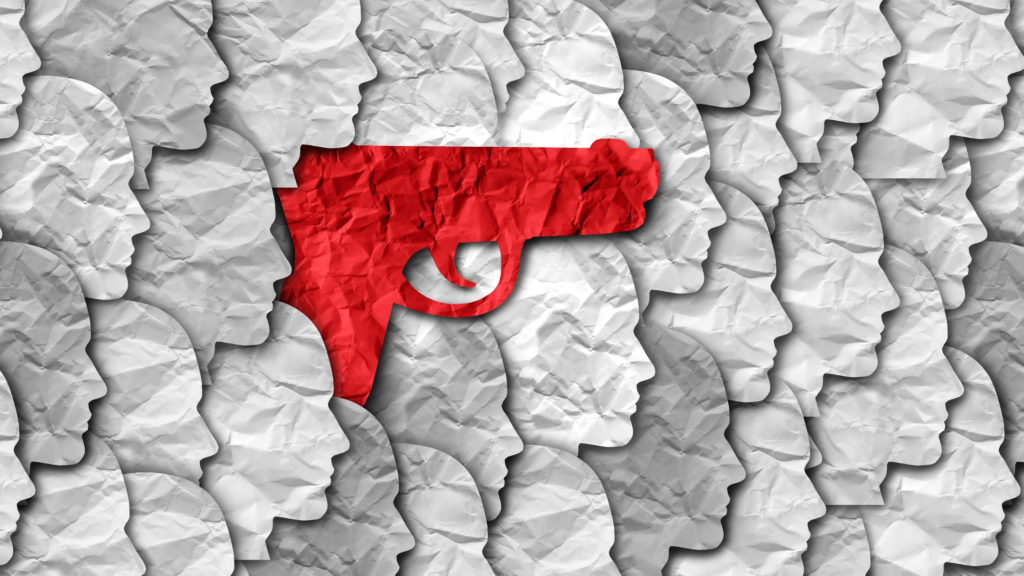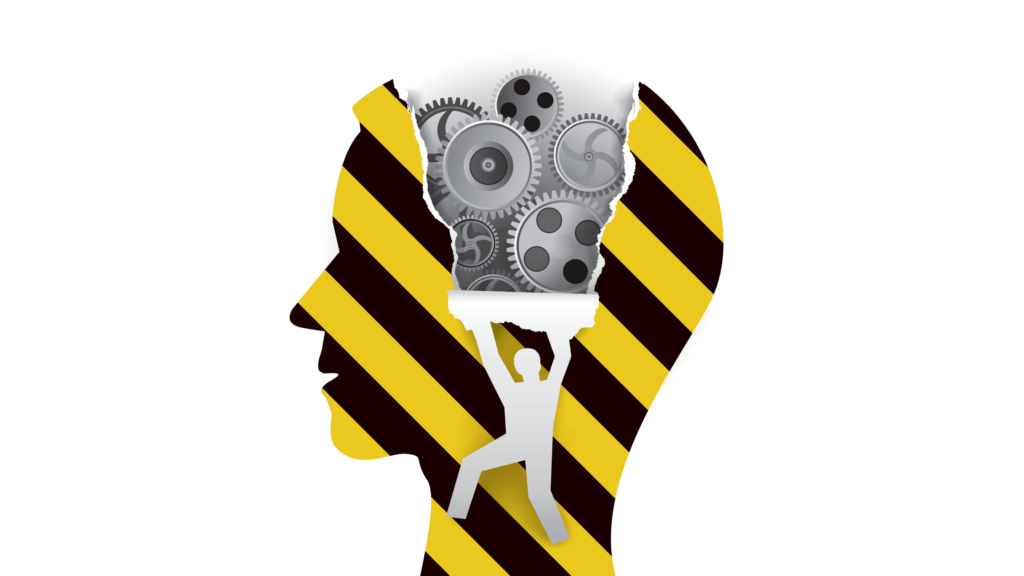The construction industry has a problem no one talks about. Construction workers have a 1.75 times higher suicide rate than the general working population. Long hours, physical strain, job insecurity, and a culture that rewards toughness over vulnerability play a role. However, one factor stands out: access to firearms. Firearms are a prevalent method of suicide in the U.S., accounting for 54% of all gun deaths. Given that construction is a male-dominated industry with higher rates of gun ownership, firearms are likely a key factor, and their presence can turn a passing moment of despair into a fatal decision. It’s time to have an honest conversation about mental health, stigma, and the role of firearms in this crisis.
Quick look
- Construction workers face a suicide rate 2.4 times higher than the general workforce, with firearms playing a significant role in impulsive decisions.
- A culture that values toughness over vulnerability discourages workers from seeking help, even as chronic pain, job insecurity, and substance use contribute to mental distress.
- Guns are the leading method of suicide, with construction workers often having easy access, making moments of crisis more deadly.
- Just as safety regulations prevent workplace accidents, mental health initiatives, and firearm safety measures can save lives in the industry.
Suicide and guns in construction

The construction industry faces a significant mental health crisis, with suicide rates alarmingly higher than in other sectors. In 2021, the suicide death rate for construction workers was 46.1 per 100,000 workers, compared to 19.5 per 100,000 in all industries—a rate 2.4 times higher.
Male construction workers are particularly affected, with a suicide rate of 56 per 100,000 male construction workers in 2021, compared to 32 per 100,000 male workers in all industries.
In the United States, nearly six out of every ten gun deaths are suicides, and 85% of those are fatal. This trend is also observed among veterans, who constitute a notable portion of the construction workforce. In 2021, firearms were the method of suicide in 73.4% of male veteran suicide deaths.
Several factors contribute to the high suicide rates in construction. The industry is predominantly male, and men are statistically more likely to die by suicide. Additionally, many construction workers are veterans, a group that experiences higher suicide rates than the general population. The high-stress environment of construction work, characterized by demanding schedules, physical labor, and job insecurity, further exacerbates mental health challenges.
Addressing this crisis requires targeted mental health support, open discussions about mental well-being, and initiatives to reduce access to lethal means among at-risk populations.
A culture of silence: Mental health in AEC
In construction, toughness isn’t just expected—it’s a way of life. “For decades, workers have been told to ‘rub some dirt on it’ and get back to work, whether dealing with a broken bone or a bad day,” says Michele Daugherty, CEO of ABC, Central Florida Chapter. “If you twisted your ankle, it was like, ‘Thanks a lot, now we all have to work twice as hard.’ So when we’re not sensitive to physical ailments, we have a hard time with the unseen ones.” That mindset has left little room for open conversations about mental health, even as construction workers die by suicide at alarmingly high rates.
The physical demands of the job take a serious toll. Years of heavy lifting, repetitive motion, and exposure to hazardous conditions lead to chronic pain and long-term injuries. Many workers turn to opioids or alcohol to manage pain, increasing their risk of addiction and worsening their mental health. Financial stress compounds the problem—seasonal layoffs, job insecurity, and unpredictable paychecks create instability that weighs heavily on workers.
Unlike physical safety, mental well-being is rarely a priority on job sites. Many workers don’t know where to turn for help; even when resources exist, the stigma keeps them silent. “We all say, ‘Hey, how are you?’ and the answer is always, ‘I’m fine.’ But fine is the new F-word—because we’re all lying through our teeth.”
The construction industry has made progress in workplace safety and injury prevention, but it’s time to extend that same commitment to mental health awareness and suicide prevention. Workers shouldn’t have to choose between staying silent and risking their lives.
The role of guns: Accessibility and suicide risk
In the U.S., guns are more than just weapons—they’re symbols of self-reliance, protection, and personal freedom. Many construction workers grow up around firearms, viewing them as an essential part of life. Daugherty described how deeply ingrained gun culture is in the U.S., particularly in rural areas. “I didn’t get dolls growing up—I got a shotgun,” she said. “When I moved out, I didn’t get a necklace. I got a handgun.” For many, firearms are as much a part of life as any other rite of passage, making it even harder to separate gun ownership from discussions about public health and safety. But while gun ownership is often equated with safety, the reality is starkly different—firearms drastically increase the risk of suicide.
“People might not know that while doctors advocate for the needs of their patients, they also advocate for public health and safety,” said Dr. Najma Ahmed, a trauma physician and Surgeon-In-Chief at St. Michael’s Hospital in Canada who has treated countless gunshot wounds and campaigned tirelessly for stricter gun laws. “Gun control is statistically related to a decline in gun-related deaths. Stronger controls over legally purchased guns reduce the likelihood they’ll fall into the wrong hands.”
The numbers back this up:
- More than half of all firearm-related deaths in the U.S. are suicides. In 2021, 54% of gun deaths (26,328 cases) were suicides.
- A suicide attempt with a gun has a 90% fatality rate compared to much lower rates for other methods.
- The leading cause of gun-related death in Canada is also suicide.
While most job sites prohibit firearms, state laws vary. Some workplaces extend the ban to parking lots, but many do not, allowing workers to keep guns in their vehicles. That accessibility can be the difference between a passing moment of crisis and a permanent decision.
Dr. Ahmed emphasized the importance of treating gun violence—including suicide—as a public health issue, not just a political debate. “When people died in massive numbers due to car collisions, we instituted seat belt laws. We get vaccinations to prevent measles and polio. Stricter gun laws follow the same preventative measures for public health and safety.”
Just as safety harnesses and hard hats protect construction workers from falls, mental health initiatives and firearm safety policies can save lives. The industry needs to recognize that the right to own a gun should never supersede someone’s right to life.
Prevention strategies

Construction has built a safety culture around hard hats, harnesses, and OSHA training, but there’s still a long way to go when it comes to mental health. Suicide prevention needs to be treated with the same urgency as workplace injuries and fatalities—because the numbers don’t lie. More than 5,000 construction workers die by suicide each year, compared to 500 fatal job site accidents. Yet, as Michele Daugherty pointed out, the industry has strict training for physical safety but little to no mandatory education on mental health awareness.
“We train OSHA 10 for 500 deaths a year, but where’s the training for the 5,000 suicides?” Daugherty asked. “We have federal OSHA reps, state OSHA reps, but nothing mandated to prevent these deaths. Why aren’t we screaming from the rooftops about this?”
Making mental health a job site priority
Leaders and employers must take proactive steps to ensure workers have access to mental health resources—not just a crisis hotline poster in the breakroom, but real, ongoing support. Some strategies include:
- Mental health safety talks are part of daily or weekly site meetings.
- Supervisor training to recognize warning signs of distress in workers.
- Peer support programs create a culture where asking for help isn’t seen as a weakness.
One of the most significant barriers to addressing mental health in construction is the stigma of admitting struggle. Encouraging open conversations about mental health at work can help break the silence and normalize seeking help.
Gun safety as suicide prevention
Firearm access is a significant risk factor for suicide in construction, yet few companies acknowledge the role it plays. While some states have implemented suicide prevention laws focused on gun safety, such as waiting periods and safe storage requirements, these measures are often missing from workplace policies. A few evidence-based strategies that could make a difference include:
- Encouraging workers to store firearms securely at home or in a trusted location during periods of distress.
- Partnering with gun retailers or local law enforcement to offer voluntary firearm storage programs for workers who may be at risk.
- Including gun safety education and suicide prevention training for construction employers.
Research has shown that the majority of suicide attempts are impulsive, and limiting access to lethal means, even temporarily, can be lifesaving. Construction leaders can play a role by fostering workplace cultures that take suicide risk seriously and by advocating for policies that reduce easy firearm access in times of crisis.
The cost of inaction
The construction industry faces a significant challenge with high suicide rates among its workforce. The financial implications of suicide in the construction industry are substantial. A study focusing on the New South Wales construction sector in Australia estimated the cost of self-harm and suicide at approximately AU $527 million in 2010. This figure encompasses direct costs, such as medical expenses, and indirect costs, including lost productivity and retraining expenses.
Beyond the financial burden, the human impact is profound. Each suicide represents a personal tragedy, affecting families, friends, and colleagues. The loss of a worker can lead to emotional distress among coworkers, decreased morale, and a sense of loss within the community. Just like job site safety regulations have saved countless lives, addressing mental health and firearm access can prevent tragedies before they happen. “We’ve changed industry standards before,” Daugherty said. “We need to do it again—because one life lost is one too many.”
Bottom line
Suicide has become an invisible job site hazard, and it’s time for the industry to treat it with the same level of urgency. Just as we protect workers from falls, heavy machinery accidents, and hazardous materials, we must invest in protecting their mental health.
Companies have a responsibility to ensure that mental health is not an afterthought. That means:
- Implementing job site mental health programs in the same way safety training is required.
- Creating environments where workers feel safe speaking up about their struggles.
- Enforcing policies that limit firearm access in crises, reducing impulsive suicide attempts.
- Investing in employee well-being means having healthy workers and a stronger, more productive workforce.
Construction is about building communities, but it’s also about building people—their careers, futures, and well-being. It’s time to build infrastructure and a support system for those who build it because every life lost is a preventable tragedy.
Change starts with awareness. Join the movement to protect construction workers’ mental health. Subscribe to our newsletter and follow us on social media for insights, strategies, and resources that save lives.


